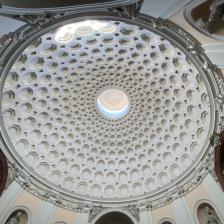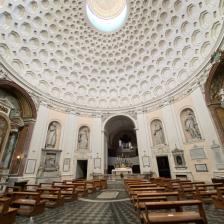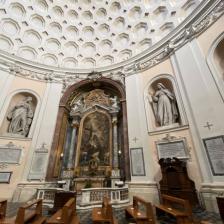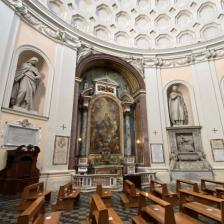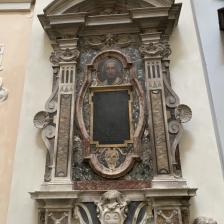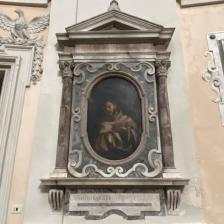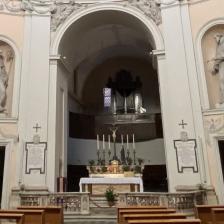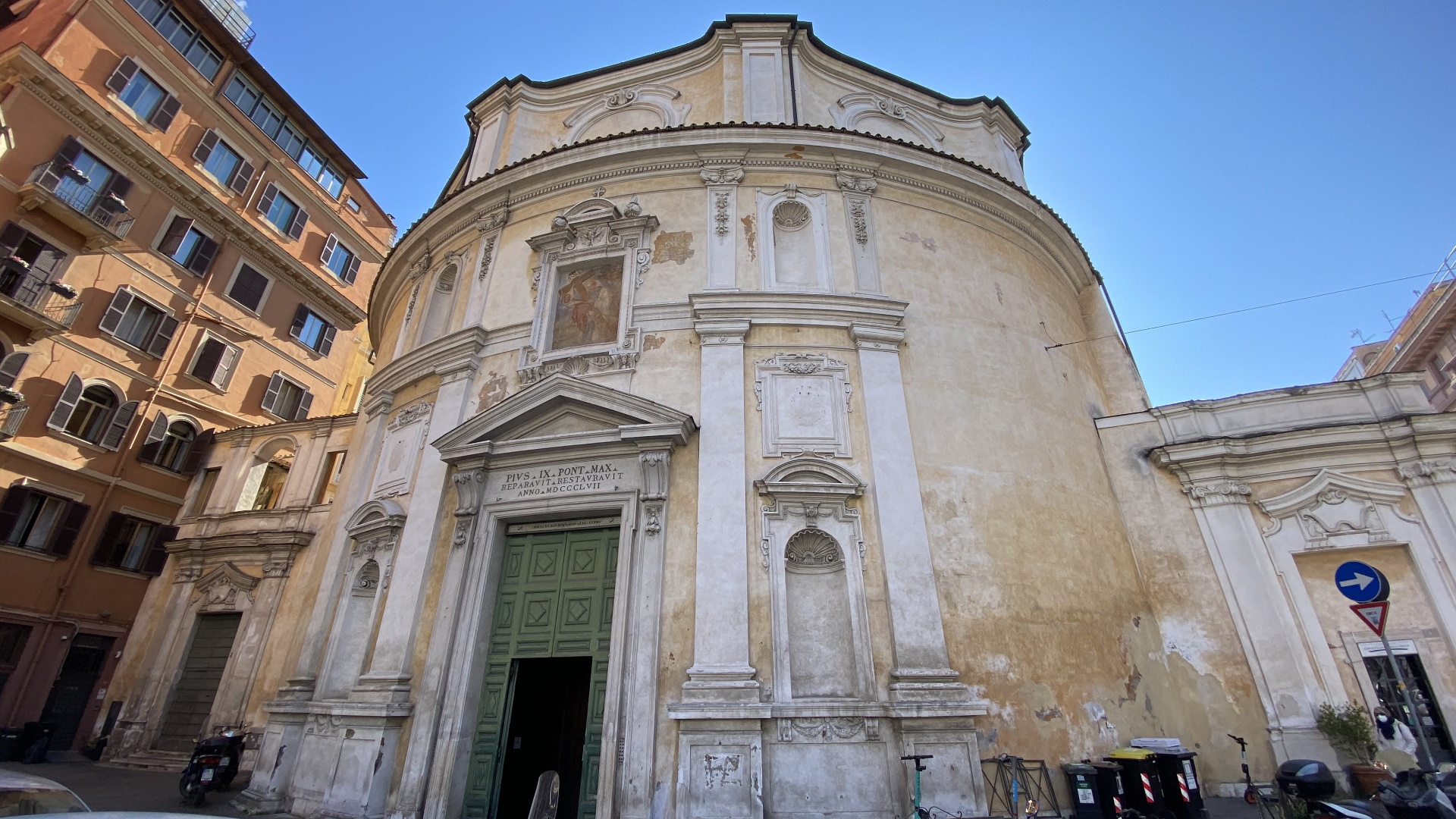
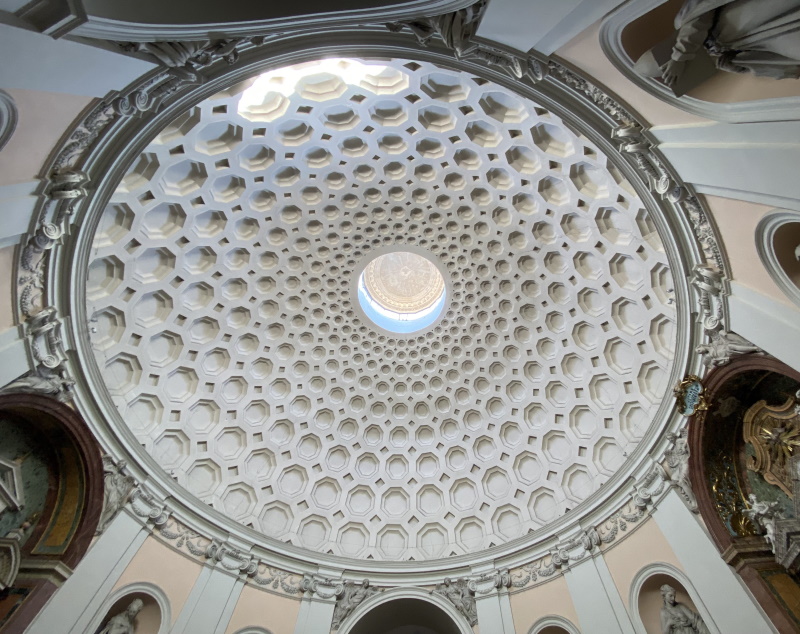
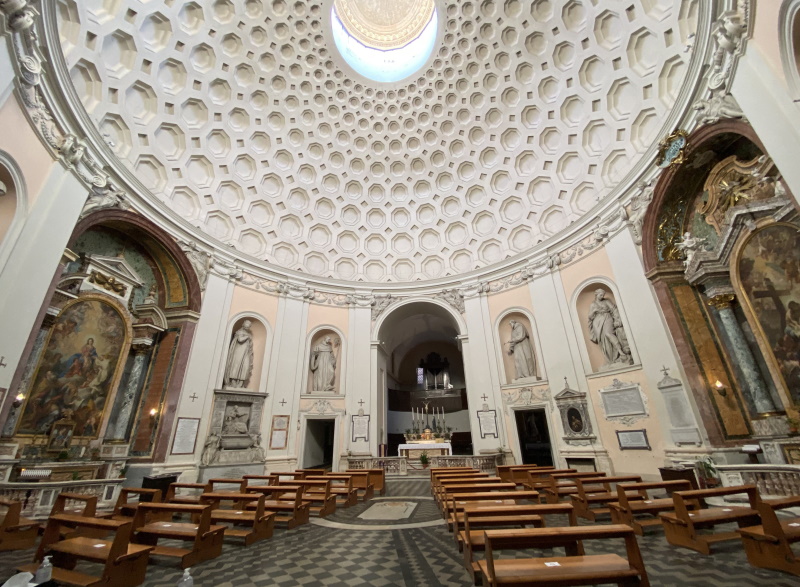
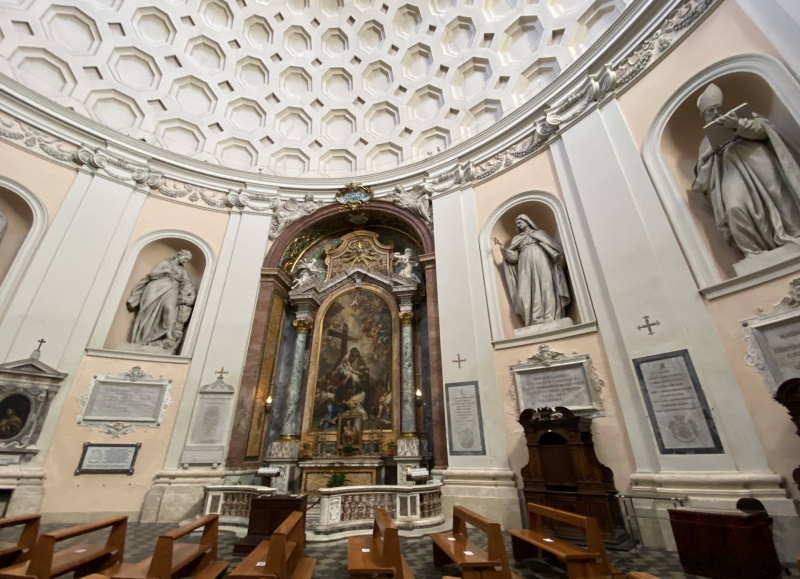
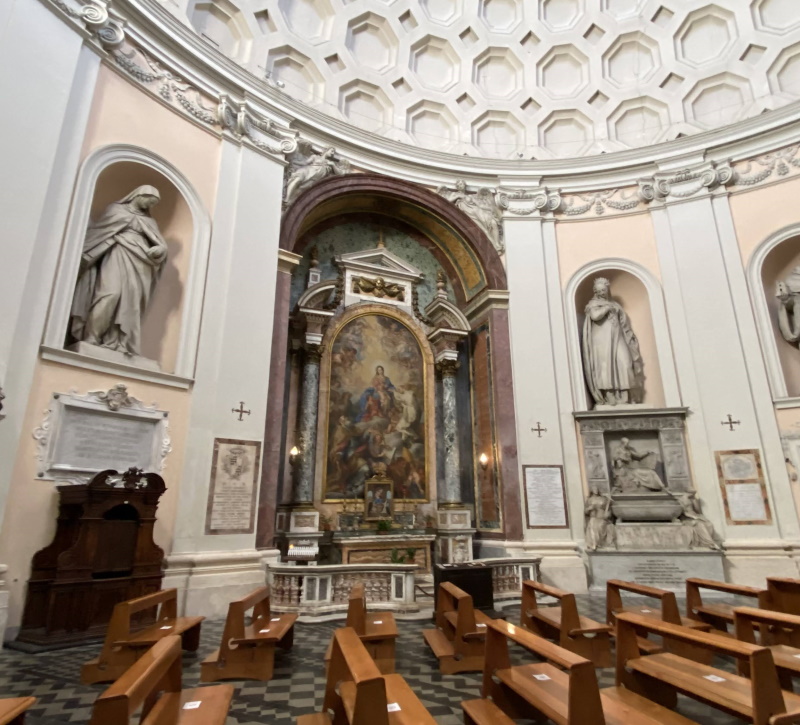
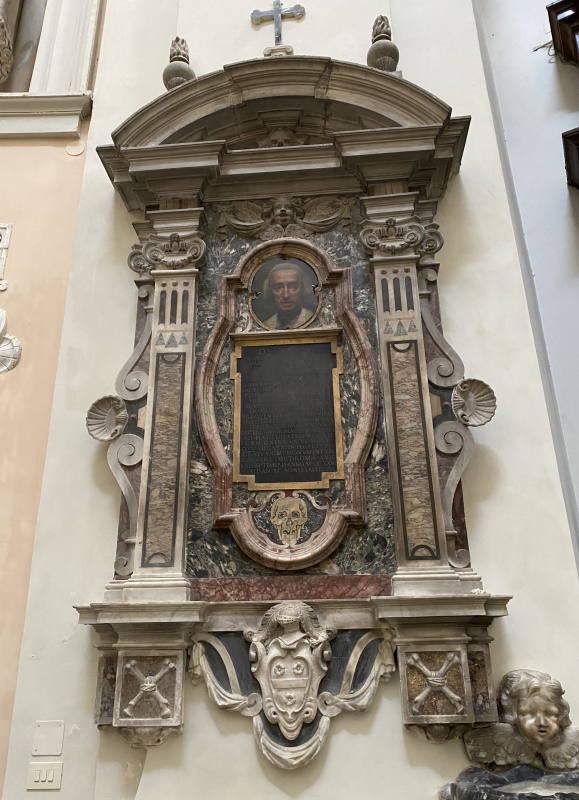
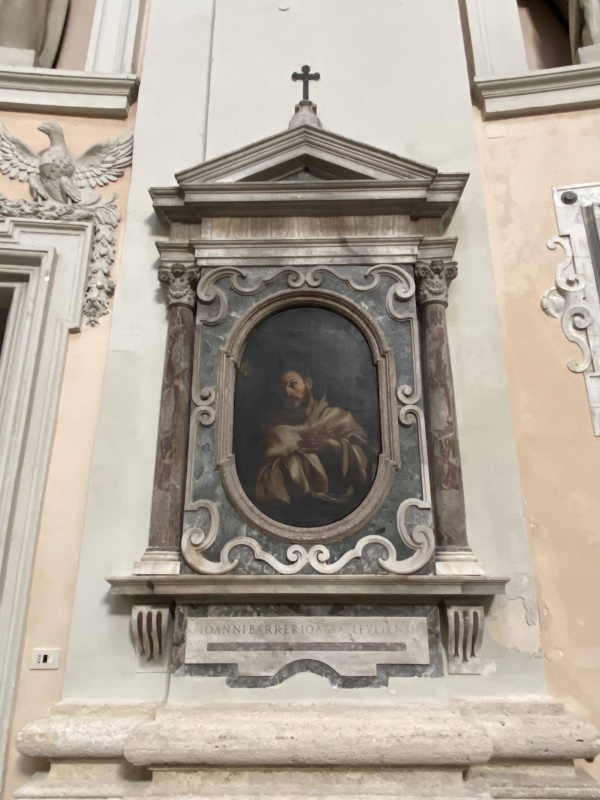
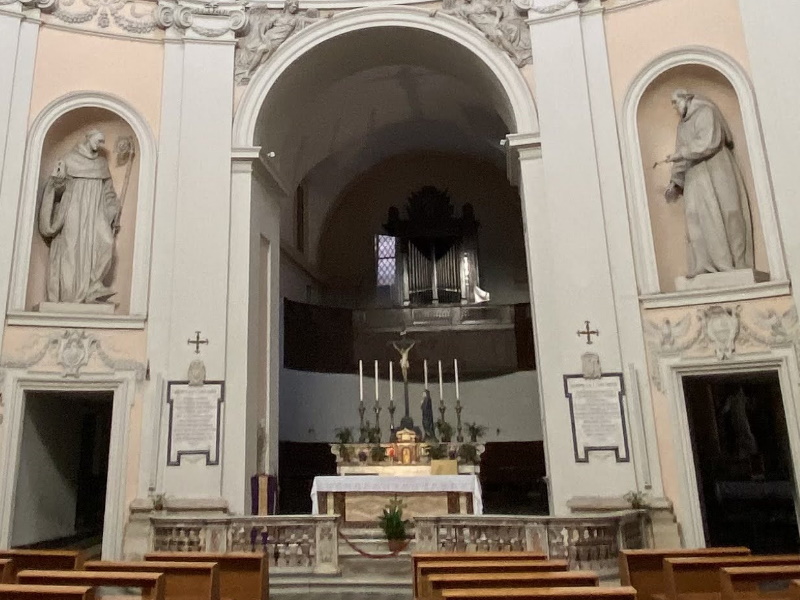
Die Kirche San Bernardo alle Terme befindet sich auf dem gleichnamigen Platz zusammen mit den Kirchen Santa Susanna und Santa Maria della Vittoria und wurde in einem der vier runden Türme erbaut, die an den Seiten der Überreste der Diokletiansthermen standen.
Im Jahr 1598 hatte die Gräfin Caterina Sforza Cesarini die Idee, den Turm in eine Kirche umzuwandeln. Mit ihrer charakteristischen zylindrischen Form wirkt San Bernardo wie ein Pantheon im Miniaturformat. Ganz ohne Fenster erhält sie, genau wie das Pantheon, ihr Licht nur durch die große runde Öffnung (Impluvium) in der Mitte der achteckigen Kassettendecke, die dank des einfallenden Lichts eindrucksvolle Licht- und Schattenspiele erzeugt.
Das Äußere der Kirche ist mit einer architektonischen Komposition aus Lisenen und Stuckrahmen verziert, die das Portal, Nischen und Rahmen umgeben. Über dem Gesims dient ein achteckiger Aufsatz, der mit großen ovalen Rahmen verziert ist, als Attika.
Mit einem Durchmesser von 22 Metern ist das Innere durch eine Reihe von Lisenen unterteilt, zwischen denen sich acht große erhöhte Nischen mit Stuckstatuen von Heiligen abwechseln, die um 1600 von Camillo Mariani geschaffen wurden. Die Statuen, die jeweils mehr als drei Meter hoch sind, blicken abwechselnd nach rechts und links und stellen den Heiligen Augustinus, die Heilige Monika, die Heilige Maria Magdalena, den Heiligen Franziskus, den Heiligen Bernhard, die Heilige Katharina von Alexandrien, die Heilige Katharina von Siena und den Heiligen Hieronymus dar.
Dieser wahre Triumph der Farbe Weiß wird nur durch die großen Altarbilder aus dem 18. Jahrhundert unterbrochen, die die beiden gegenüberliegenden Altäre überragen, sowie durch die Rahmen aus mehrfarbigem Marmor, die sie umgeben. Die Altarbilder, ein Werk von Giovanni Odazzi, zeigen den heiligen Bernhard in Ekstase, umarmt vom gekreuzigten Jesus, und die mystische Hochzeit des heiligen Robert mit der Jungfrau Maria.
Ursprünglich wurde die Kirche den Franzosen des Zisterzienserordens anvertraut. Nach der Französischen Revolution wurde der Orden aufgelöst und die Kirche der Kongregation von Bernhard von Clairvaux anvertraut, der sie gewidmet ist.
In der Kapelle San Francesco, die später an das ursprüngliche Gebäude angebaut wurde, können Sie das Grabmal des deutschen Malers Friedrich Overbeck bewundern, dem Begründer der Nazarener-Bewegung, deren Künstler, die vor allem in Rom tätig waren, sich von der Reinheit des Malstils des italienischen Quattrocento inspirieren ließen.
In der Mitte der Apsis befindet sich die 1885 von Nicola Morettini gebaute Orgel.
Museo Nazionale Romano - Terme di Diocleziano
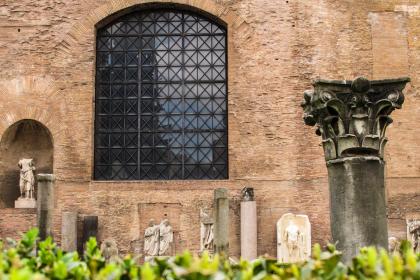
 Condividi
Condividi
Church of Santa Susanna alle Terme di Diocleziano
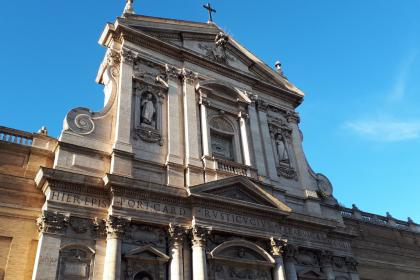
 Condividi
Condividi
Santa Maria della Vittoria
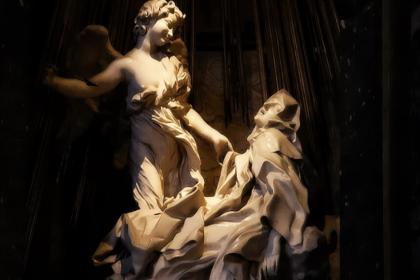
 Condividi
Condividi
Informationen
For the timetable of the masses and visiting conditions, please consult the contacts.
 Condividi
Condividi
Location
Um mehr über alle barrierefreien Dienste zu erfahren, besuchen Sie den Abschnitt barrierefreies Rom.












































